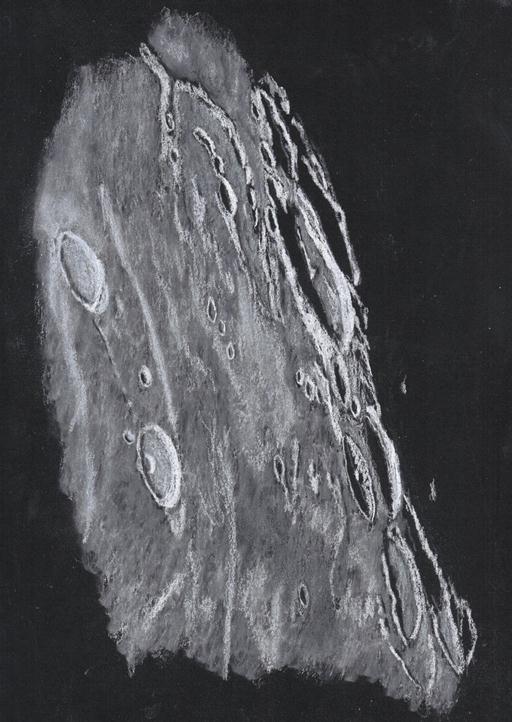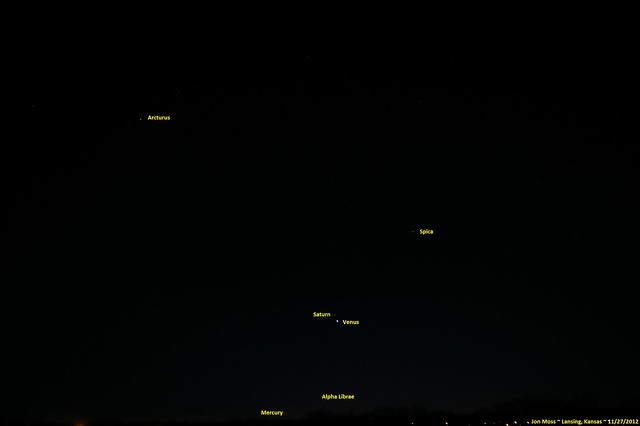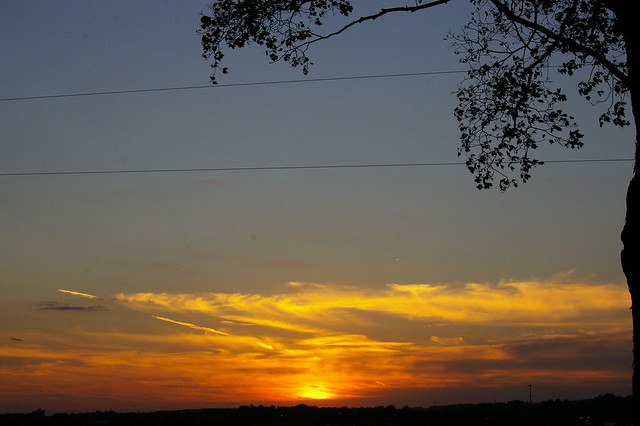Next week watch the full moon turn red and fade to black.
Posted from WordPress for Android via my Samsung smartphone. Please excuse any misspellings. Ciao, Jon
Sunsets, Stars, West, Wind
Next week watch the full moon turn red and fade to black.
Posted from WordPress for Android via my Samsung smartphone. Please excuse any misspellings. Ciao, Jon

Great sketch of moon craters on ASOD today.
Posted from WordPress for Android via my Samsung smartphone. Please excuse any misspellings. Ciao, Jon
http://earthsky.org/space/dramatic-photos-of-venus-disappearing-behind-the-moon#.Uw3M6MFME0M
Some day I hope to be in the right place at the right time to see an occultation like this. If only I’d been visiting India this week.
Posted from WordPress for Android via my Samsung smartphone. Please excuse any misspellings. Ciao, Jon
Gave me chills especially listening to the astronauts.
Posted from WordPress for Android via my Samsung smartphone. Please excuse any misspellings. Ciao, Jon
I learned something today. All is not lost (in my brain).
Posted from WordPress for Android via my Samsung smartphone. Please excuse any misspellings. Ciao, Jon
This wonderful drawing of the Moon popped up on ASOD a couple of days ago. I thought it worth share here.
Enjoy, Jon
Most “super” supermoon of 2013 on June 22-23 | Tonight | EarthSky.
Tonight the largest appearing moon of the year, just in time for summer.
Twelve degrees Fahrenheit this morning as I setup the tripod and camera for the third pre-dawn photo shoot of Saturn and Venus. Completely calm, unlike yesterday morning, so no jiggles to the camera, beyond my fumbling numb fingers. I opted for longer exposures (three or four seconds), so I ended up with some trails, especially when using the telephoto lens. Otherwise, much the same as before, with the exception of the planetary dance partners.

I don’t plan on repeating this for a fourth time tomorrow morning, but I do plan on trying to capture the full moon as it approaches Jupiter tomorrow night. There also happens to be a penumbral lunar eclipse occurring Wednesday evening.
Wednesday, November 28
Full Moon arrives at 9:46 a.m. EST. It appears against the background stars of Taurus the Bull before dawn this morning, approximately midway between the Pleiades and Hyades star clusters and below brilliant Jupiter. (The Moon will slide within 1° of the planet after sunset tonight.) But the Moon has a lot more going for it today. First, it passes through the outer part of Earth’s shadow. This penumbral lunar eclipse will slightly darken the Moon’s northern half. People in much of North America can see the eclipse’s early stages, which begin at 7:15 a.m. EST. (Those in Australia, eastern Asia, and the Pacific islands have the best views of the event.) Second, this Full Moon is the smallest (29.4′ in diameter) of 2012. Our satellite’s relatively diminutive size arises because it reaches the farthest point in its orbit around Earth at 2:37 p.m. EST today, when it lies 252,501 miles (406,362 kilometers) from Earth’s center. (Astronomy.com ‘The Sky This Week – November 23 – December 2, 2012’)
The new Moon occurred at 7:02 a.m. Monday October 15, 2012. Since sunset on Monday occurred less than twelve hours after the new moon, I didn’t even bother searching the western horizon for an assuredly invisible sliver of the young moon. Besides, we were still finishing up the hanging of the new garage doors.
Tuesday evening, after a quick repast of leftover grilled chicken and some frozen veggies (reheated of course), I gathered up my camera equipment and my binoculars and went in search of a good observing site. I ended up just past the entrance to Mt. Muncie Cemetery, with a clear view of the horizon, overlooking the local Home Depot and the Hallmark plant.
The clouds became a concern, obscuring my early efforts to locate the slim sliver of the young waxing moon. I appreciate clouds for their sunset value (see photo and album below), but they just get in the way when I’m hunting the young moon or Mercury (which happened to be very close to the moon Tuesday evening). While I continued to take photos of the sunset, I used my binoculars to scan southwest and vertical along the ecliptic, hoping to catch a glimpse of the moon through the clouds. Ten minutes after sunset, I stumbled across the sliver in my binoculars, so beautiful and almost filling my field-of-view (if it had been a full moon). Stunning sliver, so slim and delicate, peeking through some dark purple blue clouds, took my breath away. This has to be the youngest thinnest moon I’ve observed yet.
First sighting of Waxing Crescent Moon: 7:51 p.m. Tuesday 16 Oct 2012
24 hrs + 12 hrs + 49 mins = 36 hrs 49 mins
Ten minutes later:
Meanwhile, just a bit to the right, a nice sunset continued:

I got stood up on my second date with Dob thanks to the clouds. I just wish the clouds had produced some much needed rain to relieve the extended drought Kansas and the rest of the Midwest is suffering under this summer. I woke myself up in the middle of the night, checked the night sky and could barely see the moon for the clouds, so stargazing was a bust.
Even later, when I work up again (around four thirty), I peered towards the eastern horizon and could almost see Jupiter and Venus through the thinning clouds. An hour later, I checked out the back side of the house and I could clearly see the moon. The clouds had left.
I eyed my small ETX-90, huddling in ‘time-out’ in the corner behind the couch. I thought about the XT8 downstairs in the band room. I debated with myself which one would be easiest to setup outside to observe the moon after the sunrise. The Meade is lighter, but requires the battery pack, Autostar hand controller and alignment. The Orion I could just carry outside and pull into position. The Orion won that coin toss handily.
I setup on the lower patio next to the hot tub. I grabbed my case of eyepieces and my Sky & Telescope Moon Map. I wanted to find a couple of more lunar features listed on the Astro Quest. With a 25mm eyepiece inserted into the focuser drawtube, I centered the moon in the field of view. Then I checked the finderscope’s alignment and fine-tuned it to match what I could see through the telescope.

I easily located the first feature: the Sea of Tranquility.
Next, I wanted to locate the Julius Caesar crater, which just happened to be located on the western edge of Mare Tranquillitatis.
I switched out eyepieces, using a 15mm and a 9mm. I attempted to use a 4mm, but could not get a clear focus or possibly enough light to discern any lunar features. I returned to the 15mm to do some close observations of the Julius Caesar crater.
I eventually tried to find two other features: the Alpine Valley and the Straight Wall, but I will need to wait for the terminator to create shadows in those areas before I can confirm the observation.
I left the XT8 outside, putting all the dust covers and caps back in place. I plan to take some time this afternoon and do some solar observing as well, since we are at the peak of the sun’s eleven year sunspot cycle.